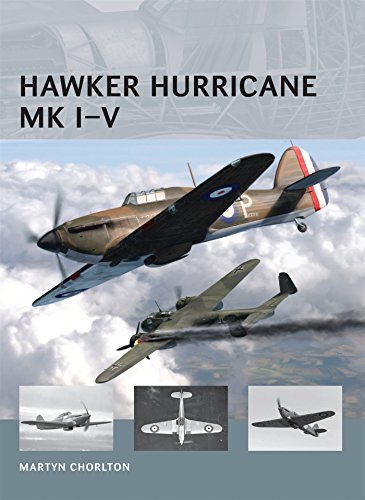Curtiss P-40: Snub-nosed Kittyhawks and Warhawks (Air Vanguard)



The Hurricane may not have been the prettiest or, the best performing aircraft, but it will always be seen as the aircraft we needed at the time, and thankfully, in high numbers. Its design had incorporated older, tried and tested technologies, but also took fighter design a little further forward as well.
When George Bulman first took the prototype into the air at Brooklands on the 6th November 1935, the new Hurricane was presented to the world as a modern fighting monoplane. Fitted with eight guns, a retractable undercarriage and the ability to breach 300mph with ease, many journalists of the day commented that the peak of fighter performance had finally been reached.
Despite the promise shown by the new fighter, the Air Ministry remained lethargic, even with the dark clouds of another world conflict approaching. It was thanks to the Hawker Aircraft Company beginning production without a solid contract that the RAF received the aircraft as early as they did.
With 111 Squadron leading the way, only a handful of squadrons were equipped with the Hurricane on the outbreak of the Second World War. Thanks to sudden massive orders and a well-organised Hawkers, sub-contracting production to Gloster and General Aircraft, more squadrons rapidly became operational. Cutting their teeth during the Battle of France, it was during the Battle of Britain that the type excelled and undoubtedly formed the backbone of Fighter Command at the time.
With technology advancing at high speed, the Hurricane was steadily overtaken by the Spitfire in the fighter defence role. However, it still remained the fighter of choice in North Africa and the Far East where it often fought against overwhelming Japanese odds. Despite a large number being shot down in these far flung conflicts, many were returned to the air after hasty repairs while more fragile designs would have been grounded permanently.
A real workhorse in all respects, the Hurricane was adapted for the ground attack role with a modified wing that could carry bombs, high calibre cannon or drop tanks. The airframe's ability to take a great deal of punishment while flying these low-level operations meant that more pilots returned to base with heavy battle damage rather than having to face bailing out over occupied territory. While many were relegated to a host of second line units, the Hurricane fought on in the Far East, especially Burma, where the fighter wreaked havoc amongst the Japanese forces.
There is no reason why this iconic aircraft should ever be overshadowed by another, for as Francis Mason stated: 'The Royal Air Force was glad to get the Spitfire...it had to have the Hurricane!'
| Country | USA |
| Author | Martyn Chorlton |
| Binding | Paperback |
| Brand | Chorlton, Martyn/ Tooby, Adam (ILT)/ Smith, Simon (ILT) |
| EAN | 9781780966021 |
| Edition | First Edition |
| ISBN | 1780966024 |
| Label | Osprey Publishing |
| Manufacturer | Osprey Publishing |
| MPN | Illustrations (some col.) |
| NumberOfItems | 1 |
| NumberOfPages | 64 |
| PartNumber | Illustrations (some col.) |
| PublicationDate | 2013-02-19 |
| Publisher | Osprey Publishing |
| ReleaseDate | 2013-02-19 |
| Studio | Osprey Publishing |